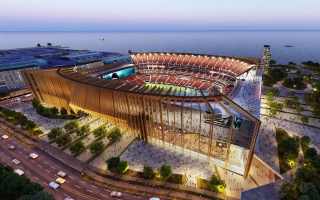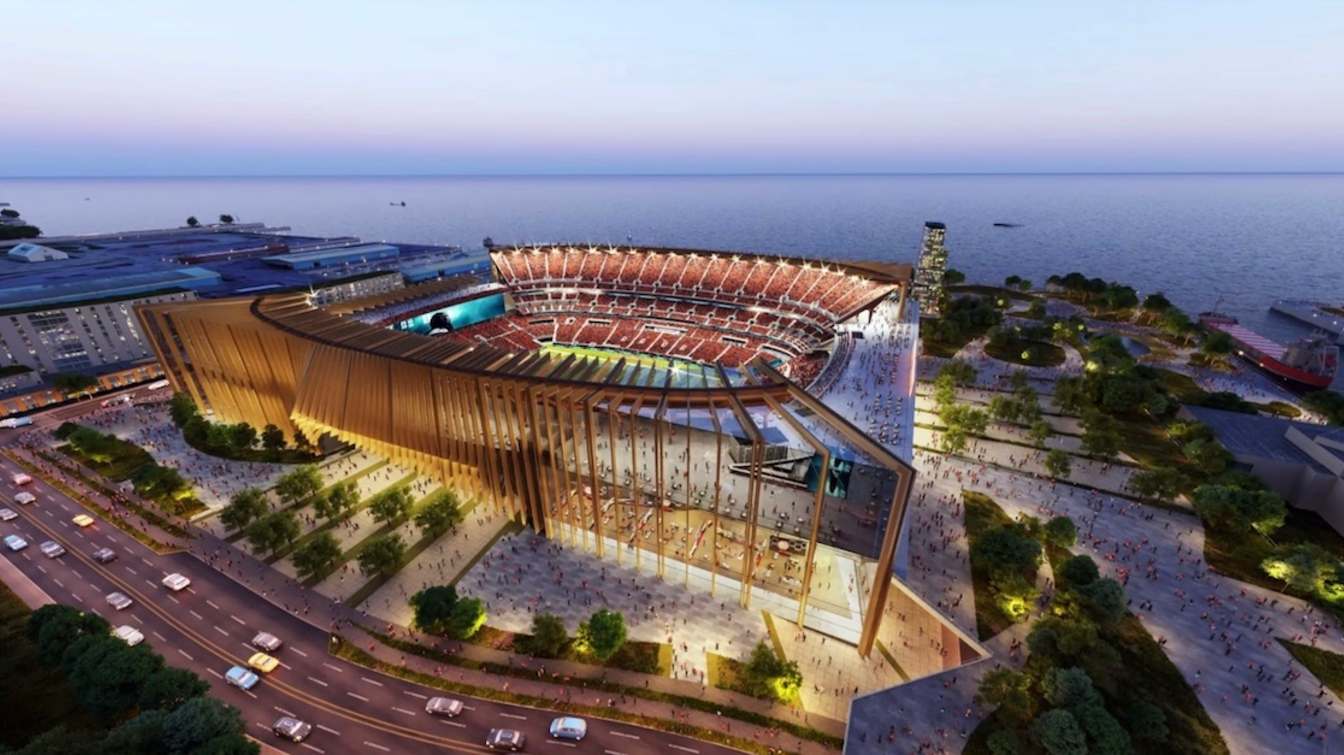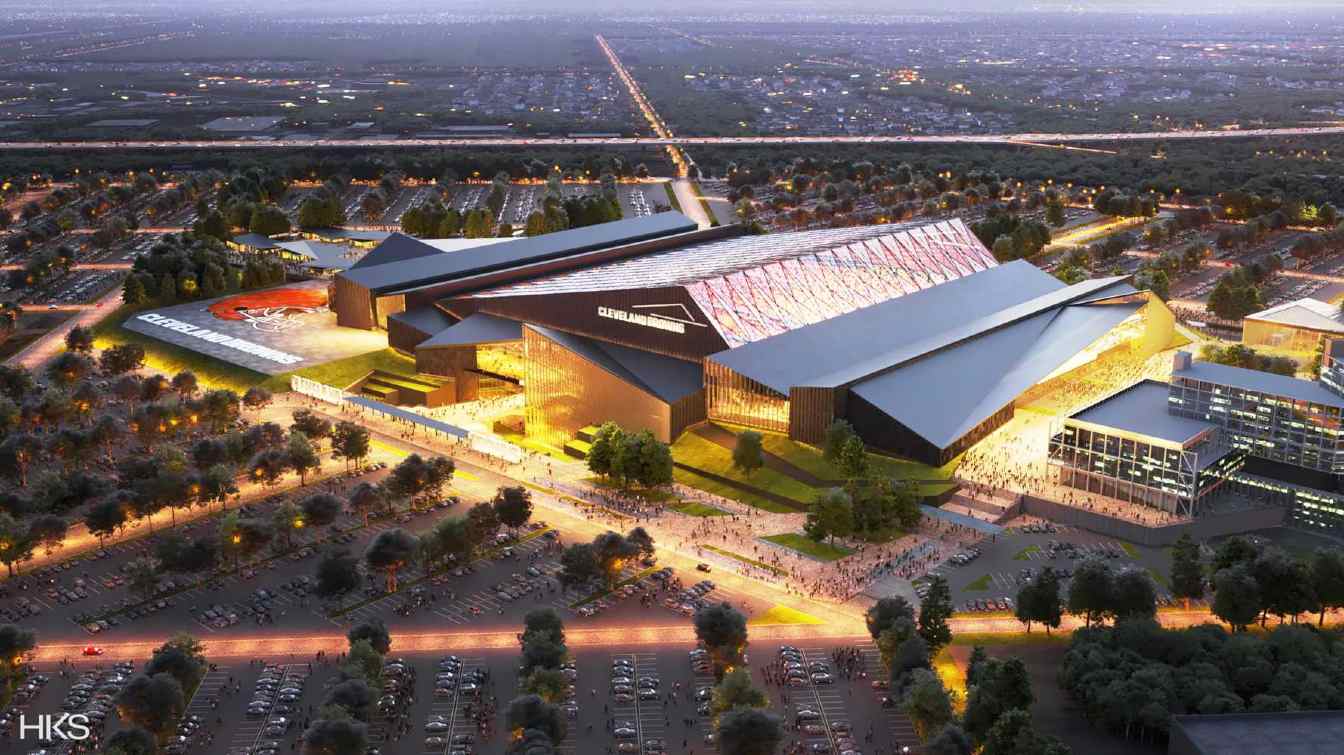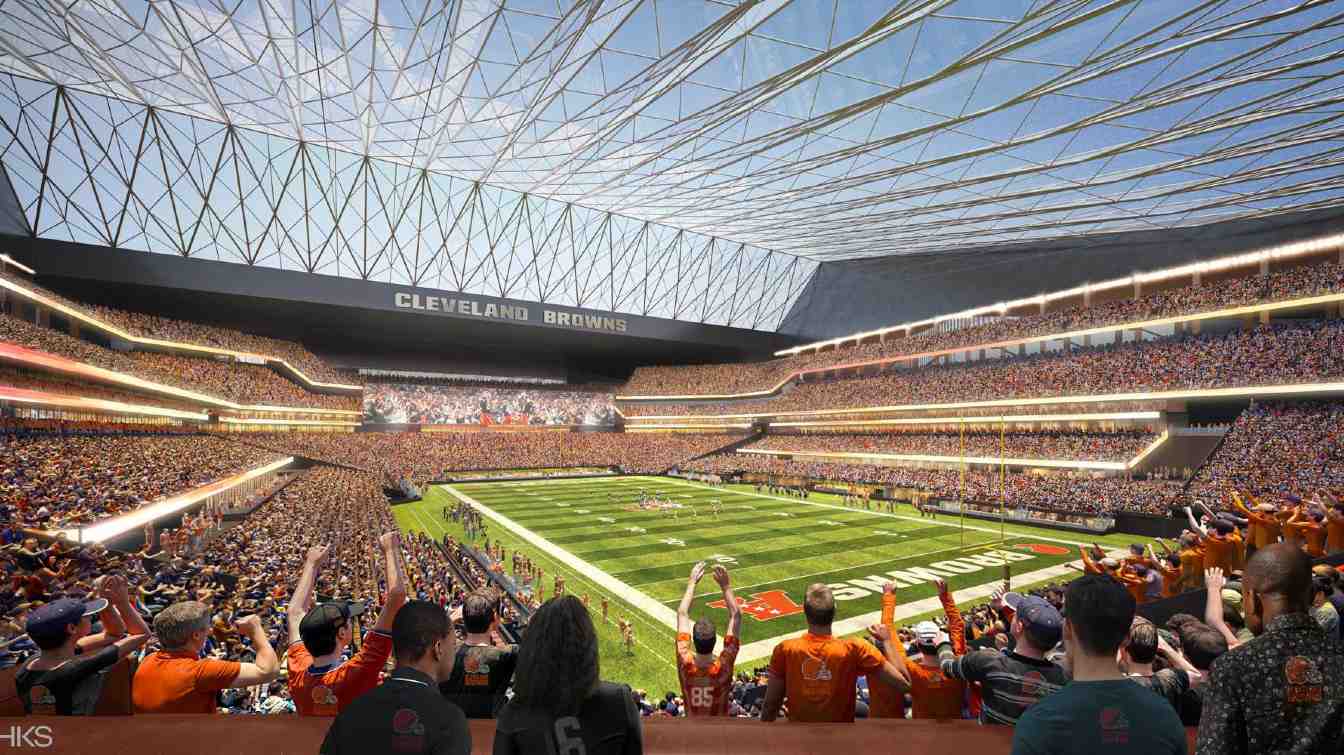USA: Cleveland Browns’ dilemma over building a new stadium
source: StadiumDB.com; author: Paulina Skóra
 The $2.4 billion project for the new Cleveland Browns stadium sparks controversy among residents and city officials. While the renovation of Huntington Bank Field is still considered, the club’s owners favor the new location in Brook Park.
The $2.4 billion project for the new Cleveland Browns stadium sparks controversy among residents and city officials. While the renovation of Huntington Bank Field is still considered, the club’s owners favor the new location in Brook Park.
Advertisement
What about renovating Huntington Bank Field?
A potential new home for the Cleveland Browns—a $2.4 billion project—has been unveiled through images, videos, and promotional materials as part of a campaign to win over state officials, business leaders, and public opinion.
However, what the Haslams have not publicly shown are the plans to renovate the current lakeside stadium—still a real second option. For years, before the shift toward Brook Park, these renovation plans were not secondary; on the contrary, they dominated discussions with the city, county, and state. As recently as late 2023 and early 2024, the Haslams shared renovation renderings with officials, stakeholders, and local business leaders—but not the public—even though they had already acknowledged the existence of two viable options.
While renovation is no longer the Haslams’ preferred solution, it remains a realistic possibility amid the ongoing budget process in Columbus and opposition to the Brook Park relocation from Cuyahoga County and the City of Cleveland.
 © Cleveland Scene
© Cleveland Scene
Thanks to a photo obtained by Scene, we now have the first glimpse of what a renovated Huntington Bank Field could look like. The single rendering is part of a larger set showcasing various views of the stadium and its place in the context of the planned lakefront transformation.
When asked for comment, Cuyahoga County Executive Chris Ronayne—who, like Mayor Justin Bibb, participated in earlier talks—said he’s glad at least part of the project has finally been made public. Mayor Bibb’s administration also believes the renovation project deserves public attention—not only because of the proposed changes to the stadium’s appearance and function, but due to its role in Cleveland’s broader urban planning vision. Early renderings of the stadium’s transformation in downtown Cleveland show the potential to create a world-class, year-round lakefront venue that builds on decades of investment in Cleveland,
said a city spokesperson.
The billion-dollar project, as shown in the rendering, would dramatically change the stadium’s exterior—from a concrete structure to one with a columned exoskeleton and glass walls, letting in light and visually connecting the stadium to its surroundings. Inside, two large fan zones would be created, and concourses would be significantly widened. On the west side, a mixed-use residential and commercial area is shown.
Plans have been around for years
Members of Haslam Sports Group said nearly two years ago that renovation could allow the stadium to be used more than 100 days a year—not as much as a domed stadium, but still far more than now—while also improving the fan experience. However, the Haslam Sports Group recently released a statement saying the renderings were created nearly three years ago as part of the process. We haven’t had serious discussions about renovation in months, and we’ve never been presented with a viable funding plan from Cuyahoga County or the City of Cleveland to supplement our private investment.
Renovating the stadium has long been a pillar of Cleveland’s lakefront transformation plan. The Haslams led that effort for years and—according to Mayor Bibb—helped shape its direction and urgency.
In 2023 and part of 2024, the Browns were weighing two plans: Brook Park and Cleveland. But the lakefront transformation plan involving the Browns has existed for years, and the Haslams were its main advocates for four or five years. When I took office in 2023, we aggressively lobbied the state to support the lakefront vision with the Browns as the anchor. We secured $280 million in infrastructure funding, partly thanks to HSG’s involvement,
said Ronayne.
That $280 million was secured by Cleveland and Cuyahoga County for a broader lakefront transformation project, which includes a pedestrian bridge connecting downtown to Lake Erie and converting the Shoreway highway into a four-lane boulevard.
Who will pay for Brook Park?
As for funding Brook Park, it’s still unclear whether the state of Ohio will provide the support the Haslams expect. Governor Mike DeWine has proposed funding this and other sports projects by increasing taxes on sports betting companies operating in Ohio. While he believes this is the most reasonable way to allocate public funds to private sports franchise owners—We can’t keep funding stadiums out of general revenue
—it’s uncertain how quickly these funds can be collected or whether bonds can be backed by future revenue.
Meanwhile, the Ohio House of Representatives’ budget includes $600 million in bonds for the Brook Park project. The state Senate is considering a hybrid model but has yet to propose its own version or clarify whether it will support the Haslams’ plan. Although the Browns have presented reports on the expected economic impact—including event counts, visitor numbers, and revenue projections from a domed venue, which are central to their argument that the state, county, and Brook Park could repay $1.2 billion in bonds (which would rise to $2 billion with interest)—the legislature’s independent Budget Office has deemed these forecasts overly optimistic.
Ronayne is even more critical of the proposed financial model, calling the county’s $600 million bond commitment too risky
for its budget. Instead, he is calling for $350 million in state bonds to renovate Huntington Bank Field.
Advertisement

 StadiumDB
StadiumDB ©
©  ©
©